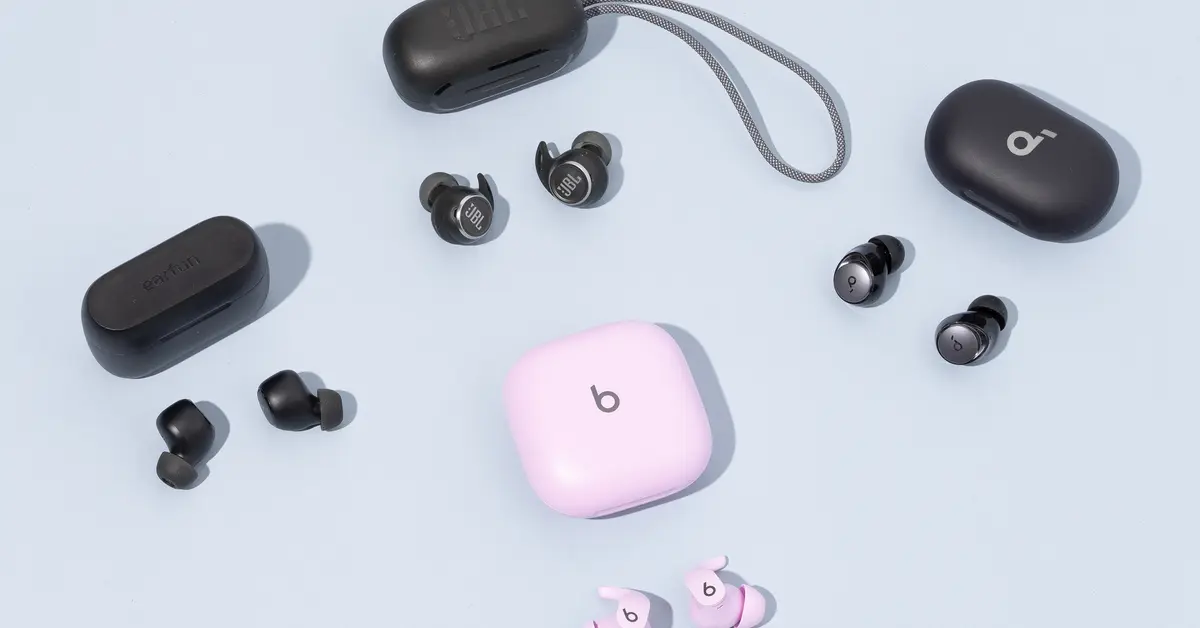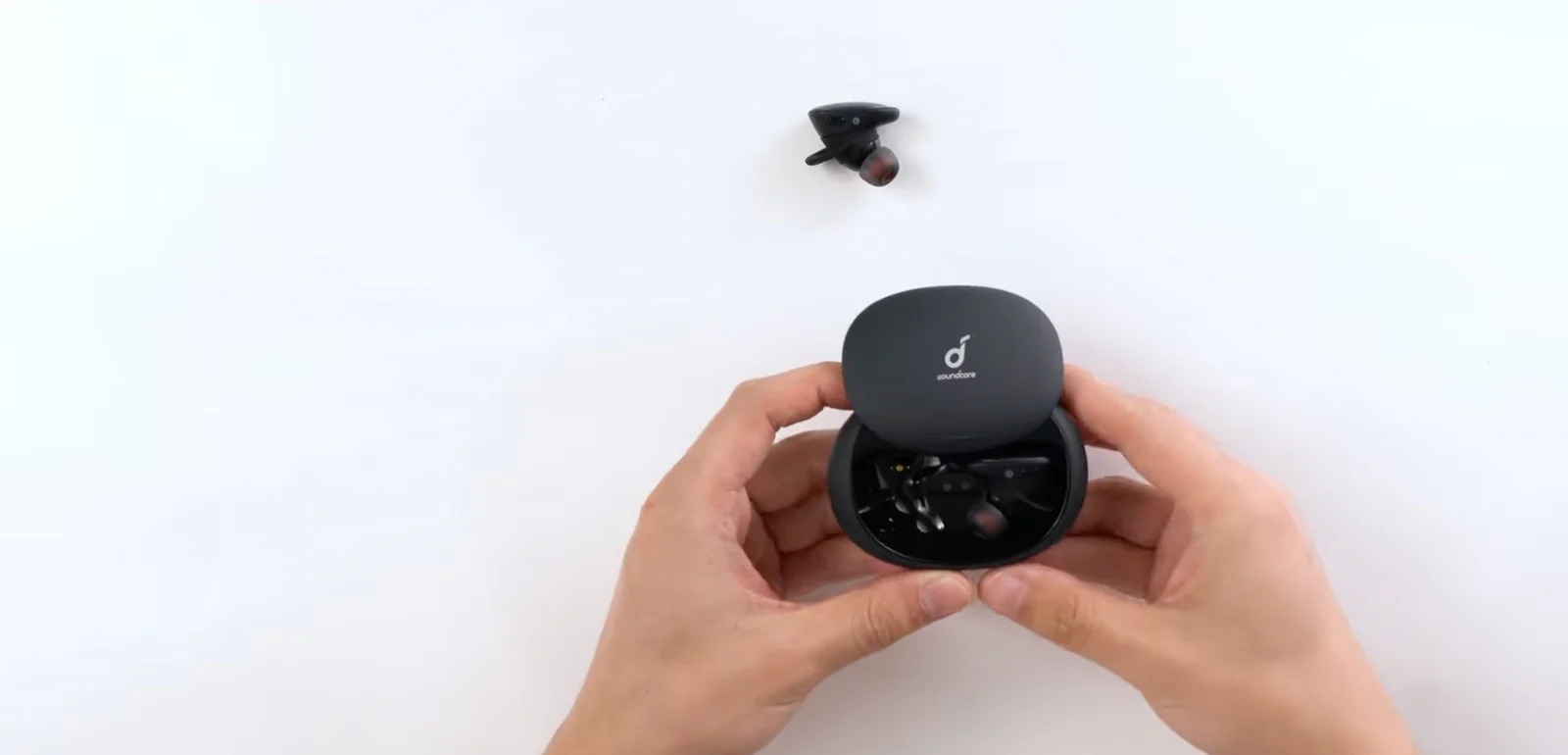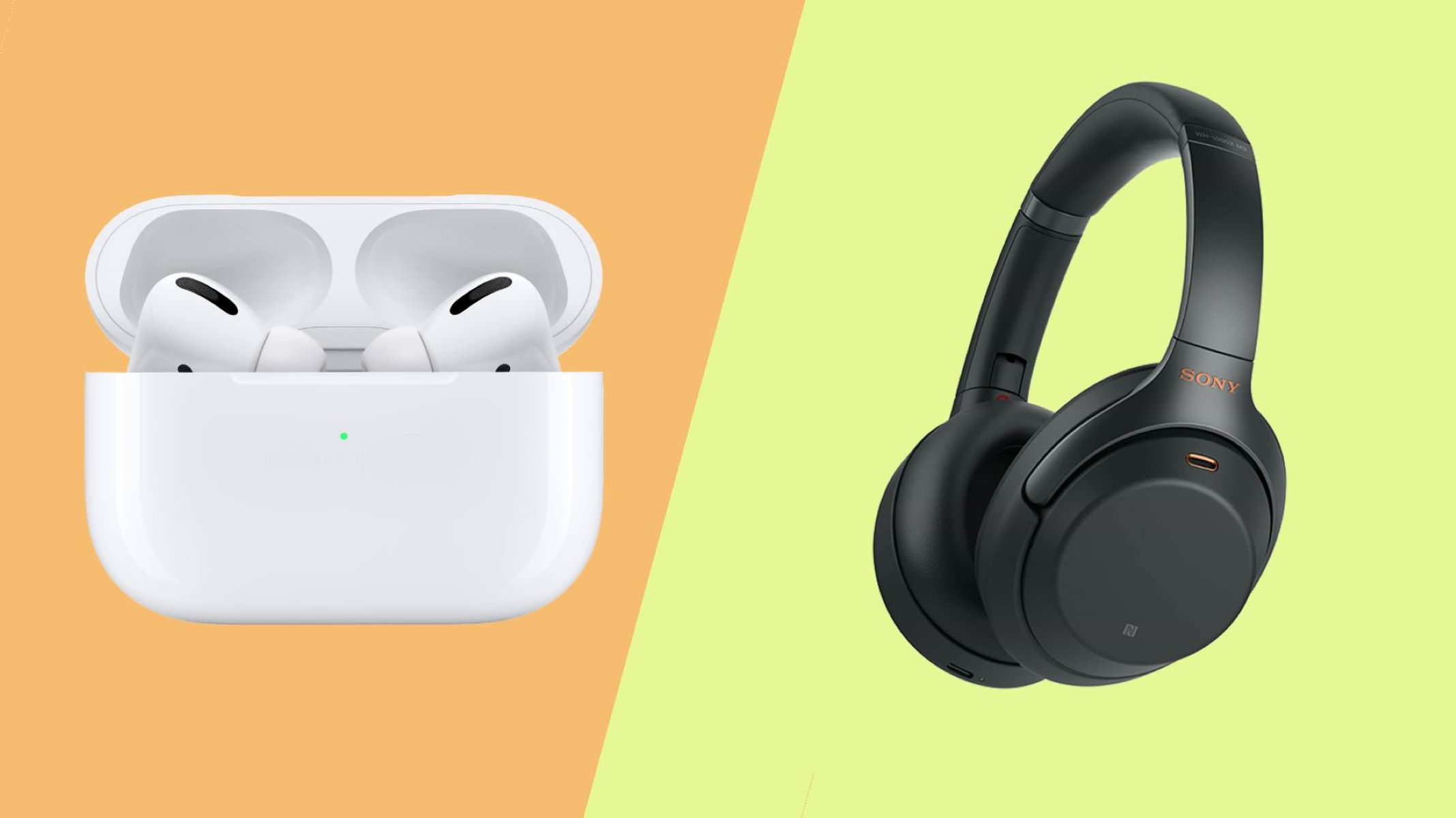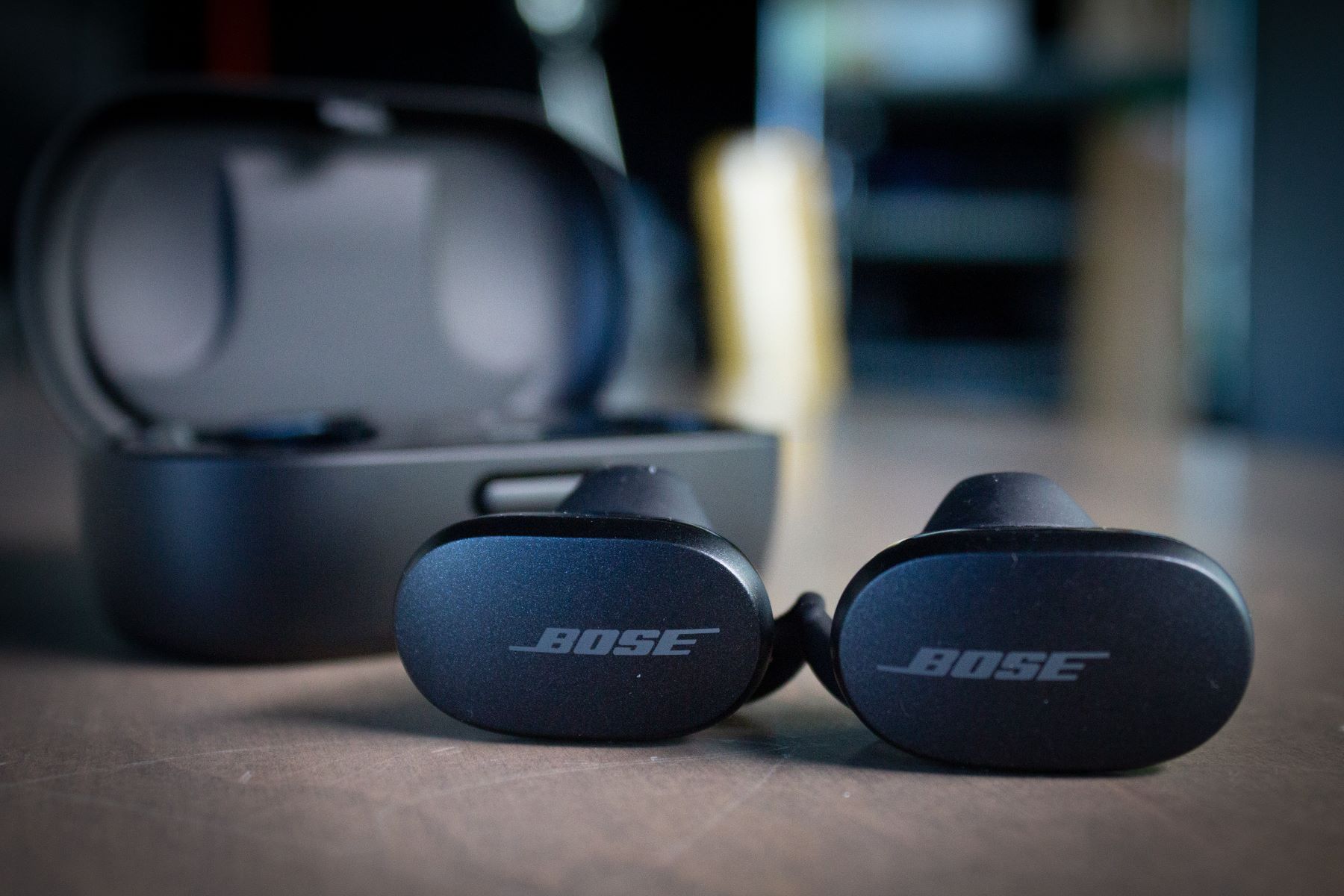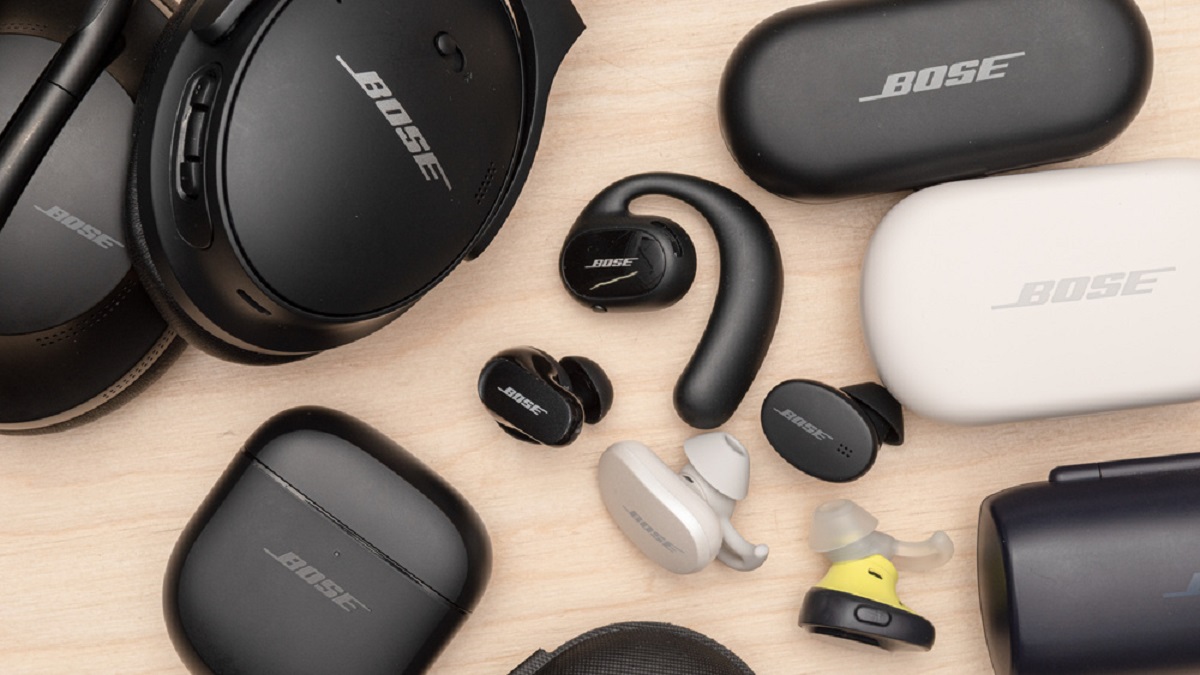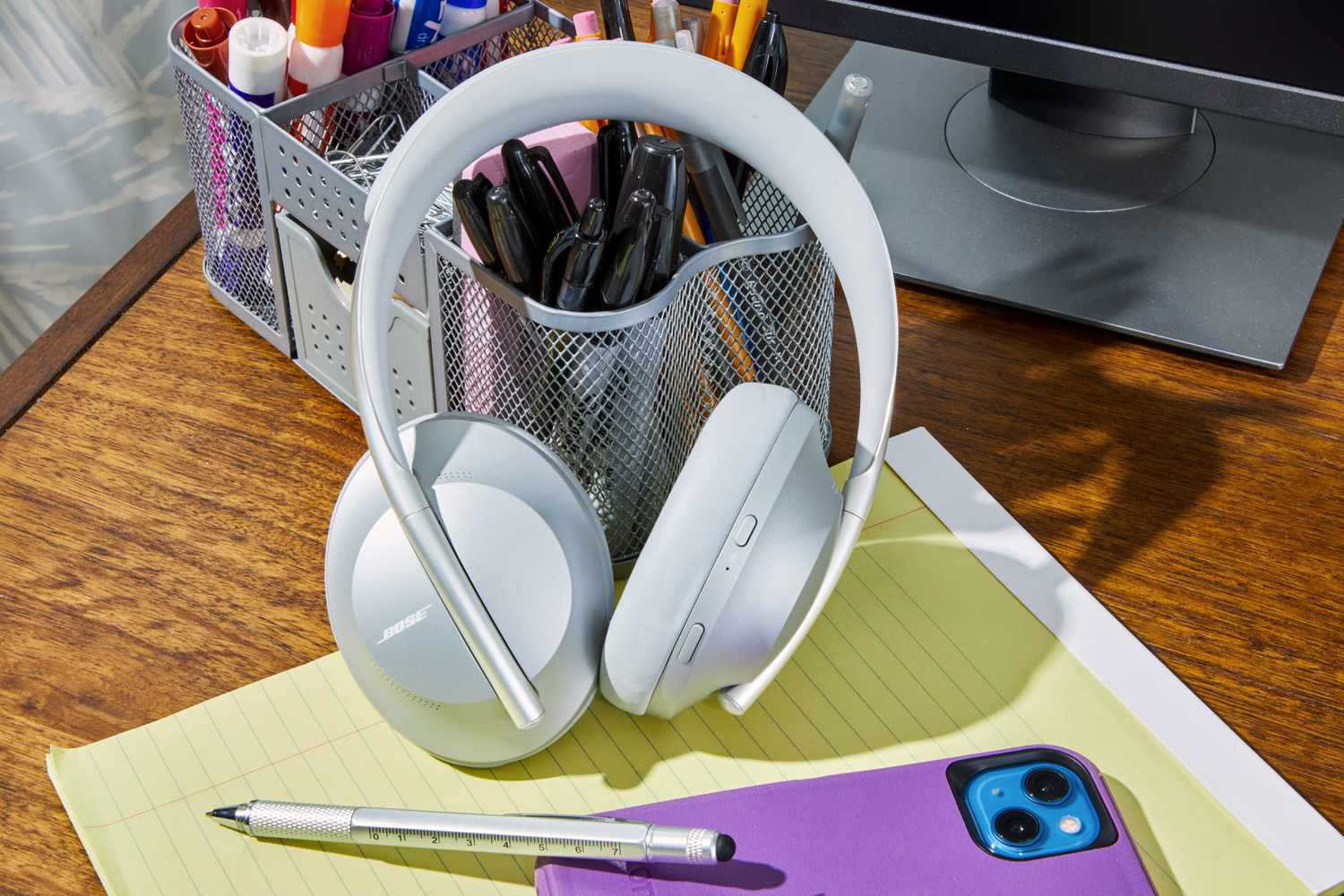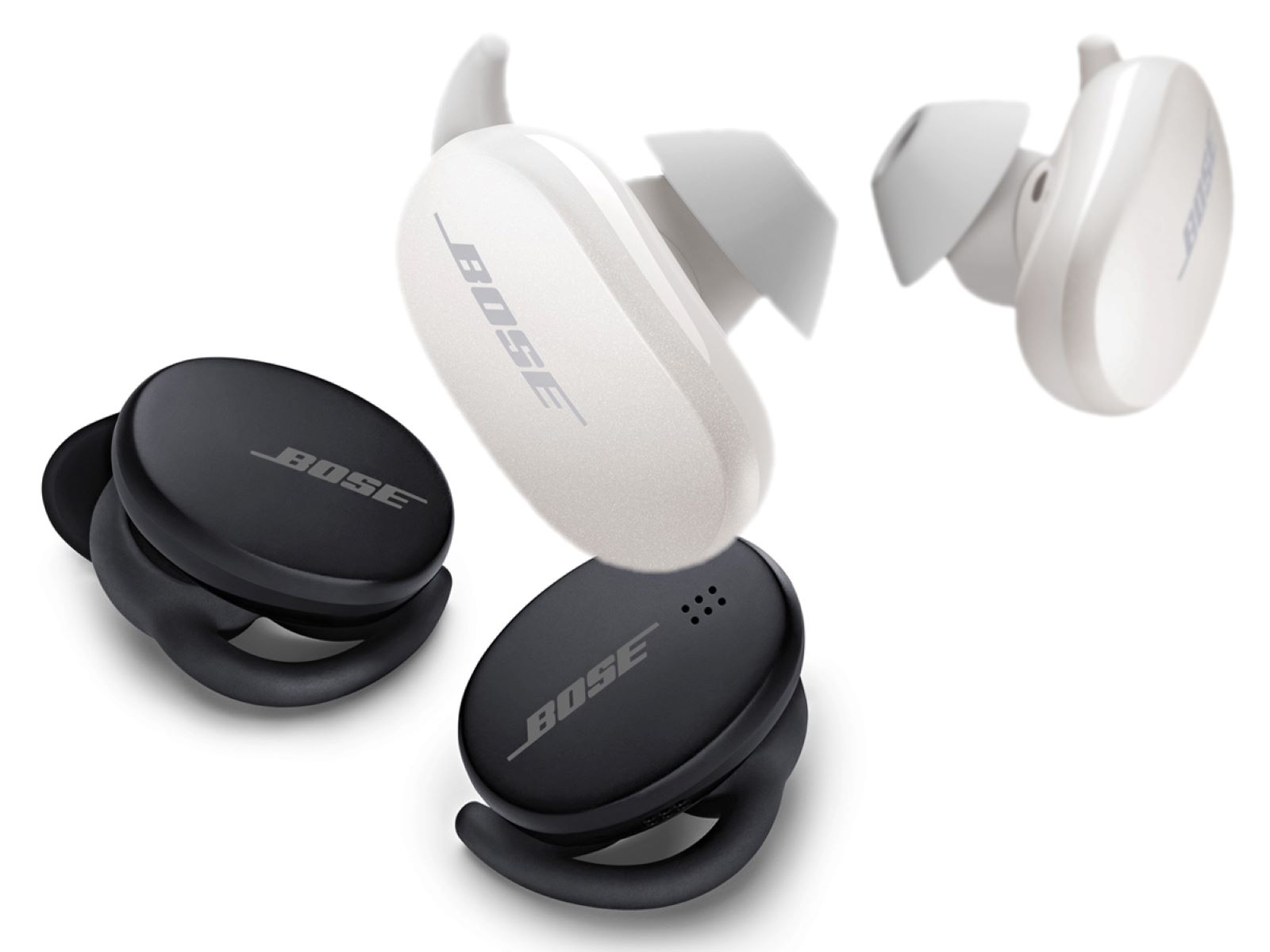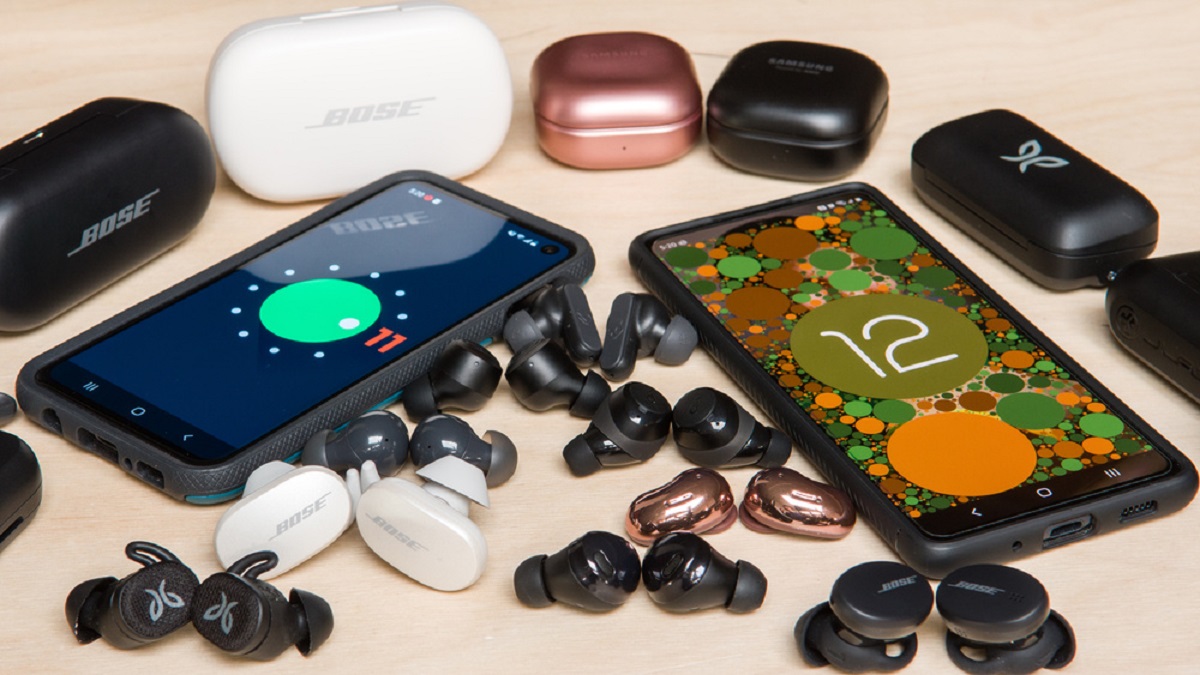Introduction
Wireless earbuds have become incredibly popular in recent years, providing users with the convenience and freedom of listening to music or taking calls without being tethered to their devices. However, some users may find that their wireless earbuds are not as loud as they expected. This can be frustrating, especially for those who crave a high volume listening experience.
There are several factors that contribute to the perceived quietness of wireless earbuds. Understanding these factors can help users make informed decisions when purchasing and using wireless earbuds.
In this article, we will explore the various reasons why wireless earbuds may seem quieter than expected. We will discuss limitations related to battery life, Bluetooth connection range, earbud design and fit, audio quality and volume limits, noise cancellation technology, device volume restrictions, ambient sound and external interference, and the impact of audio streaming quality. By understanding these factors, users can better manage their expectations and maximize their enjoyment of wireless earbuds.
Let’s dive into the details and uncover the reasons behind the perceived quietness of wireless earbuds.
Battery life limitations
One of the key factors that can contribute to the perceived quietness of wireless earbuds is the battery life limitations. Most wireless earbuds are powered by small, built-in batteries that provide a limited amount of power for audio playback. As the battery drains, the power output to the earbuds may decrease, resulting in a decrease in volume.
Additionally, some wireless earbuds employ power-saving features to extend battery life. These features can include automatically dimming the sound or limiting the maximum volume output. While these features are designed to optimize battery usage, they can result in a quieter listening experience.
Furthermore, it is worth noting that different wireless earbud models have varying battery capacities and overall battery performance. Cheaper earbuds may have lower-quality batteries that do not hold a charge as effectively, leading to quicker power depletion and reduced volume levels. Higher-end earbuds, on the other hand, may offer longer battery life and more consistent sound output.
To mitigate the impact of battery life limitations on the volume of wireless earbuds, it is important to ensure that the earbuds are fully charged before use. Regularly charging and maintaining the battery can help maximize its lifespan and ensure optimal sound performance.
In summary, battery life limitations can affect the volume output of wireless earbuds. Being aware of the battery capacity and charging the earbuds regularly can help mitigate this issue and ensure a more satisfactory listening experience.
Bluetooth connection range
Another factor that can impact the perceived volume of wireless earbuds is the Bluetooth connection range. Bluetooth technology allows wireless earbuds to connect to a device without the need for physical wires. However, the range of the Bluetooth connection can vary depending on the earbud model and the device being used.
When the distance between the wireless earbuds and the connected device exceeds the Bluetooth connection range, the signal may weaken or even be lost altogether. This can result in a decrease in volume or intermittent audio playback. Therefore, if you move too far away from your device while using wireless earbuds, you may experience difficulty hearing the audio clearly.
To ensure a strong and stable Bluetooth connection, it is important to stay within the recommended range specified by the earbud manufacturer. This range can vary, but it is typically around 30 feet (9 meters) without obstruction. Obstacles such as walls, furniture, or other electronic devices can also weaken the Bluetooth signal and impact the volume and audio quality.
In some cases, wireless earbuds may automatically adjust the volume when the connection weakens to compensate for the loss of audio fidelity. This adjustment can result in a perceived decrease in volume. However, it is important to note that maintaining a strong and reliable Bluetooth connection is crucial for optimal audio performance and volume output.
To ensure a better Bluetooth connection and minimize any volume-related issues, it is advisable to keep your wireless earbuds and the connected device in close proximity and avoid any potential sources of interference. Additionally, periodic cleaning of the earbuds and the device’s Bluetooth settings can help optimize the connection and improve the overall audio experience.
In summary, the Bluetooth connection range can affect the volume and audio playback of wireless earbuds. Staying within the recommended range and minimizing interference can help ensure a stronger and more consistent connection, resulting in a better volume experience.
Earbud design and fit
The design and fit of wireless earbuds play a significant role in the perceived volume and sound quality. The earbud’s fit inside the ear canal can affect the level of noise isolation and the volume of the audio being delivered.
Earbuds come in various shapes and sizes, and it is essential to find a pair that fits comfortably and securely in your ears. If the earbuds are too loose or do not create a proper seal in the ear canal, sound can leak out, resulting in a decrease in volume. Additionally, ambient noise from the surroundings can also seep in, further affecting the perceived volume and clarity of the audio.
On the other hand, if the earbuds are too tight or create discomfort, they can cause physical discomfort and impact the overall listening experience. Finding the right balance between a secure fit and comfort is crucial in maximizing the volume output of wireless earbuds.
Furthermore, some wireless earbuds are designed to redirect sound directly into the ear canal, enhancing the volume and audio clarity. These designs can include features like angled drivers or in-ear nozzles that help direct sound waves towards the eardrum for a more immersive and louder experience.
In addition to the physical design, earbuds that come with multiple sizes of ear tips allow users to find the perfect fit. Choosing the appropriate size can ensure a better seal and improved noise isolation, resulting in increased volume and enhanced audio quality.
It is worth noting that individual ear shapes and sizes can vary, so what works well for one person may not work for another. Experimenting with different ear tip sizes and trying out different models with varying designs can help you find the perfect fit and maximize the volume output of your wireless earbuds.
In summary, the design and fit of wireless earbuds can significantly impact the perceived volume and sound quality. Finding a pair of earbuds with a comfortable and secure fit, as well as considering designs that enhance sound isolation and directness, can contribute to a louder and more immersive listening experience.
Audio quality and volume limits
Audio quality and volume limits are important considerations when it comes to wireless earbuds. While technological advancements have greatly improved the audio capabilities of earbuds, certain factors can still impact the volume output and overall sound quality.
Firstly, the quality of the audio file being played can directly affect the perceived volume. Low-quality audio files, such as those with low bitrate or significant compression, may not provide the same level of volume and clarity as high-quality, uncompressed files. Therefore, it is recommended to use high-quality audio files to fully utilize the potential volume capabilities of wireless earbuds.
In addition, some wireless earbuds have built-in volume limits as a safety feature to prevent potential harm to the ears. These limits are typically enforced to comply with regulations and ensure the user’s listening experience is within safe levels.
However, it is important to note that these volume limits can often be adjusted or disabled within the earbud’s settings. Users can explore the settings of their wireless earbuds or consult the user manual to understand how to modify these volume limits to their preferences. It is essential to strike a balance between enjoying a louder volume and protecting one’s hearing health.
Furthermore, the design and capabilities of the drivers within the earbuds can also impact the maximum volume output. Some earbuds may have smaller, more compact drivers that have limitations on the maximum volume they can produce.
Additionally, audio volume can be influenced by the equalizer settings on the connected device. Adjusting the equalizer settings can potentially enhance the volume and optimize the audio output specifically for the wireless earbuds being used.
In summary, the audio quality and imposed volume limits can affect the perceived volume of wireless earbuds. Using high-quality audio files, adjusting volume limits within the earbuds’ settings, considering driver capabilities, and optimizing equalizer settings can all contribute to maximizing the volume output and audio experience of wireless earbuds.
Noise cancellation technology
Noise cancellation technology has become a popular feature in many wireless earbuds, aimed at providing a more immersive audio experience by reducing or eliminating background noise. However, this technology can also have an impact on the perceived volume.
Active noise cancellation (ANC) works by using microphones on the earbuds to detect external ambient sounds and producing inverse sound waves to counteract them. By canceling out the background noise, ANC can enhance the clarity and intelligibility of the audio being played.
However, it is essential to note that ANC technology can create a sense of quietness, which can sometimes be misinterpreted as a decrease in volume. This is because the background noise that was previously present is noticeably reduced, creating a perception of lower volume levels. In reality, the volume output of the earbuds remains the same, but the noise cancellation masks the external sounds, creating a quieter and more focused listening environment.
Additionally, some wireless earbuds offer different levels of noise cancellation, allowing users to adjust the strength of the noise cancellation effect. This customization can further impact the perceived volume as higher levels of noise cancellation can result in a greater reduction of background noise, potentially increasing the perception of quietness.
It is also worth mentioning that noise cancellation technology is more effective at canceling out constant and low-frequency sounds, such as the hum of an airplane engine or the rumble of traffic. Sudden and high-frequency sounds may not be entirely eliminated by noise cancellation, leading to occasional fluctuations in volume levels.
In summary, noise cancellation technology in wireless earbuds can create a quieter listening experience by reducing or masking background noise. While this can sometimes be mistaken for decreased volume levels, understanding how noise cancellation works and adjusting the settings can help users maximize the benefits of ANC technology and enjoy a more immersive audio experience.
Device volume restrictions
In addition to the limitations of wireless earbuds themselves, the device connected to the earbuds can also impose volume restrictions. Many smartphones, tablets, and other audio devices have built-in volume limit settings to prevent potential hearing damage.
These volume restrictions are typically implemented to comply with safety regulations and guidelines, especially for protecting the hearing of younger users. The device’s operating system or media player software often includes options to limit the maximum volume output. These restrictions can affect the perceived volume levels, even if the wireless earbuds are capable of producing louder sound.
Furthermore, some devices have separate volume controls for various output methods, such as speakers, headphones, and earbuds. It is important to ensure that the volume level is appropriately adjusted for the specific output method being used.
While these device volume restrictions are intended for safety, they may not always align with individual preferences. Users who desire a louder volume experience with their wireless earbuds can explore the settings of their devices to adjust or disable these volume restrictions. However, it is crucial to remember the importance of protecting one’s hearing health and to find a suitable balance between volume and safety.
Additionally, it is worth noting that different devices and operating systems may have varying approaches to volume control. Some may provide a more granular control with smaller increments, while others may have broader steps with fewer volume levels. Understanding the specific volume control capabilities of your device can help in maximizing the volume output of wireless earbuds.
In summary, device volume restrictions can impact the perceived volume of wireless earbuds. Familiarizing yourself with the volume control settings of your device and adjusting or disabling volume limitations where appropriate can help achieve a more satisfactory volume experience.
Ambient sound and external interference
Ambient sound and external interference can have a significant impact on the perceived volume and overall audio experience of wireless earbuds. These external factors can contribute to a quieter or distorted sound output.
When using wireless earbuds in noisy environments, such as crowded streets or public transportation, the surrounding ambient sound can compete with the audio being played through the earbuds. This can reduce the clarity and perceived volume of the sound, making it more challenging to hear the desired content.
Additionally, certain types of external interference, such as electromagnetic interference from other electronic devices, can disrupt the wireless connection between the earbuds and the connected device. This interference can result in audio interruptions, drops in volume, or even complete signal loss. It is important to be mindful and avoid areas with high levels of interference to optimize the audio experience.
To mitigate the impact of ambient sound and external interference on the volume and audio quality of wireless earbuds, noise isolation strategies can be employed. Choosing earbuds with excellent noise isolation capabilities, such as those with a snug fit or active noise cancellation technology, can help block out the external noise and enhance the perceived volume of the audio.
Furthermore, selecting an appropriate listening environment can also contribute to a better volume experience. Moving to quieter areas or using soundproofing measures, like closing doors or windows, can minimize the external noise and create a more focused audio listening environment.
Lastly, keeping the wireless earbuds and the connected device away from potential sources of interference, such as other electronic devices or strong magnetic fields, can help ensure a stable and uninterrupted audio connection, thus optimizing the volume and sound quality.
In summary, ambient sound and external interference can impact the perceived volume and audio quality of wireless earbuds. Utilizing noise isolation, selecting suitable listening environments, and minimizing potential sources of interference are essential in maximizing the volume experience and enhancing the overall audio enjoyment.
Audio streaming quality
The quality of the audio stream being transmitted to wireless earbuds can have a significant impact on the perceived volume and overall audio experience. The streaming quality is influenced by various factors, including the source of the audio, the streaming technology used, and the internet connection stability.
When streaming audio from sources like music streaming platforms or video streaming services, the quality of the audio file can vary. Higher-quality audio files, such as those in lossless formats, can provide a more dynamic range and better volume representation. In contrast, lower-quality audio files with heavy compression may result in a decrease in volume or a loss of audio detail.
Additionally, the streaming technology employed can also play a role in the audio streaming quality. Some wireless earbuds utilize advanced audio codecs, such as AAC or aptX, which can improve the audio fidelity and provide a better volume experience. However, it is important to ensure that the connected device and the streaming source support these codecs to take full advantage of their capabilities.
Furthermore, the stability of the internet connection can impact the streaming quality. If the internet connection is weak or suffers from latency issues, it may result in buffering or dropouts in the audio stream, leading to interruptions and fluctuations in volume levels. Ensuring a stable and reliable internet connection can help improve the streaming quality and maintain a consistent volume experience.
Another factor to consider is the streaming bitrate, which is the amount of data transferred per unit of time during audio streaming. Higher bitrate streams generally provide better audio quality and volume representation compared to lower bitrate streams. However, it is worth noting that higher bitrate streams require a stronger internet connection and can consume more data, so users should consider their internet plan and data usage limits.
In summary, the audio streaming quality can impact the perceived volume and overall audio experience of wireless earbuds. Considering the quality of the audio file, the streaming technology and codecs used, the stability of the internet connection, and the streaming bitrate can contribute to a better volume representation and enhance the overall enjoyment of the audio content.
Conclusion
Wireless earbuds offer convenience and freedom, allowing users to enjoy music, podcasts, and calls without being tethered to their devices. However, the perceived quietness of wireless earbuds can sometimes be a cause of frustration for users seeking a louder volume experience. In this article, we have explored various factors that can contribute to the perceived quietness of wireless earbuds.
We discussed how battery life limitations, Bluetooth connection range, earbud design and fit, audio quality and volume limits, noise cancellation technology, device volume restrictions, ambient sound and external interference, and audio streaming quality can all impact the overall volume experience.
Understanding these factors can help users manage their expectations and maximize the enjoyment of their wireless earbuds. By ensuring that the earbuds are fully charged, staying within the recommended Bluetooth connection range, finding the right fit and design, utilizing the available volume control settings, considering noise cancellation technology, minimizing ambient sound and external interference, and optimizing streaming quality, users can enhance the volume output and audio quality of their wireless earbuds.
It is important to note that finding the right volume level is a personal preference, and it is crucial to pay attention to one’s hearing health. While it may be tempting to listen at high volumes, it is essential to strike a balance between enjoying the music and protecting one’s ears from potential harm.
By taking into consideration the various factors discussed in this article and making appropriate adjustments, users can optimize their wireless earbud experience and enjoy a louder and more immersive audio experience.







